Complete Solutions to Junction Transistor of chapter SEMICONDUCTOR ELECTRONICS of Class 12 book with complete answers and questions
| Class 12 | PHYSICS |
| Chapter | SEMICONDUCTOR ELECTRONICS |
| A2Z | Junction Transistor |
| Number Of Questions | 47 |
| Academic Year | 2023-24 |
In transistor, forward bias is always smaller than the reverse bias. The correct reason is
View SolutionIn `NPN` transistor, if doping in base region is increased then collector current
View SolutionThe phase difference between input and output voltage of a `CE` circuit is
View SolutionAn oscillator is nothing but an amplifier with
View SolutionThe emitter-base junction of a transistor is .........biased while the collector-base junctio is.......biased
View SolutionIn an `NPN` transistor the collector current is `24 mA`. If `80%` of electrons reach collector it base current in `mA` is
View SolutionIn the case of constant `alpha` and `beta` of a transistor
View SolutionWhich of the following is true?
View SolutionA triode has a plate resistance of `10 k Omega` and amplification factor `24`. If the input signal voltage is `0.4 V(r.m.s)`, and the load resistance is `10 k` ohm, then, the output voltage is (r.m.s.) is
View SolutionIf `alpha=0.98` and current through emitter `i_(e)=20 mA`, the value of `beta` is
View SolutionIn a `PNP` transistor working as common-base amplifier, current gain is `0.96` and current is `7.2 mA`. The base current is
View SolutionIf `l_(1),l_(2),l_(3)` are the lengths of the emitter, base and collector of a transistor then
View SolutionIn an `NPN` transistor the collector current is `10 mA`. If `90%` of electrons reach collector, the emitter current `(i_(E))` and base current `(i_(B))` are given by
View SolutionIn a common emitter transistor, the current gain is `80`. What is the change in collector current, when the change in base current is `250 muA`?
View SolutionLeast doped region in a transistor
View SolutionThe transistors provide good power amplification when they are used in
View SolutionThe transfer ration of a transistor is `50`. The input resistance of the transistor when used in the common -emitter configuration is `1 kOmega`. The peak value for an `A.C.` input voltage of `0.01 V` peak is
View SolutionFor a transistor the parameter `beta=99`. The value of the parameter `alpha` is
View SolutionIn a `PNP` transistor the base is the `N`-region. Its width relative to the `P`-region is
View SolutionA common emitter amplifier is designed with `NPN` transistor `(alpha=0.99)`. The input impedence is `1k Komega` and load is `10 Komega`. The voltage gain will be
View SolutionThe symbol given in figure represents
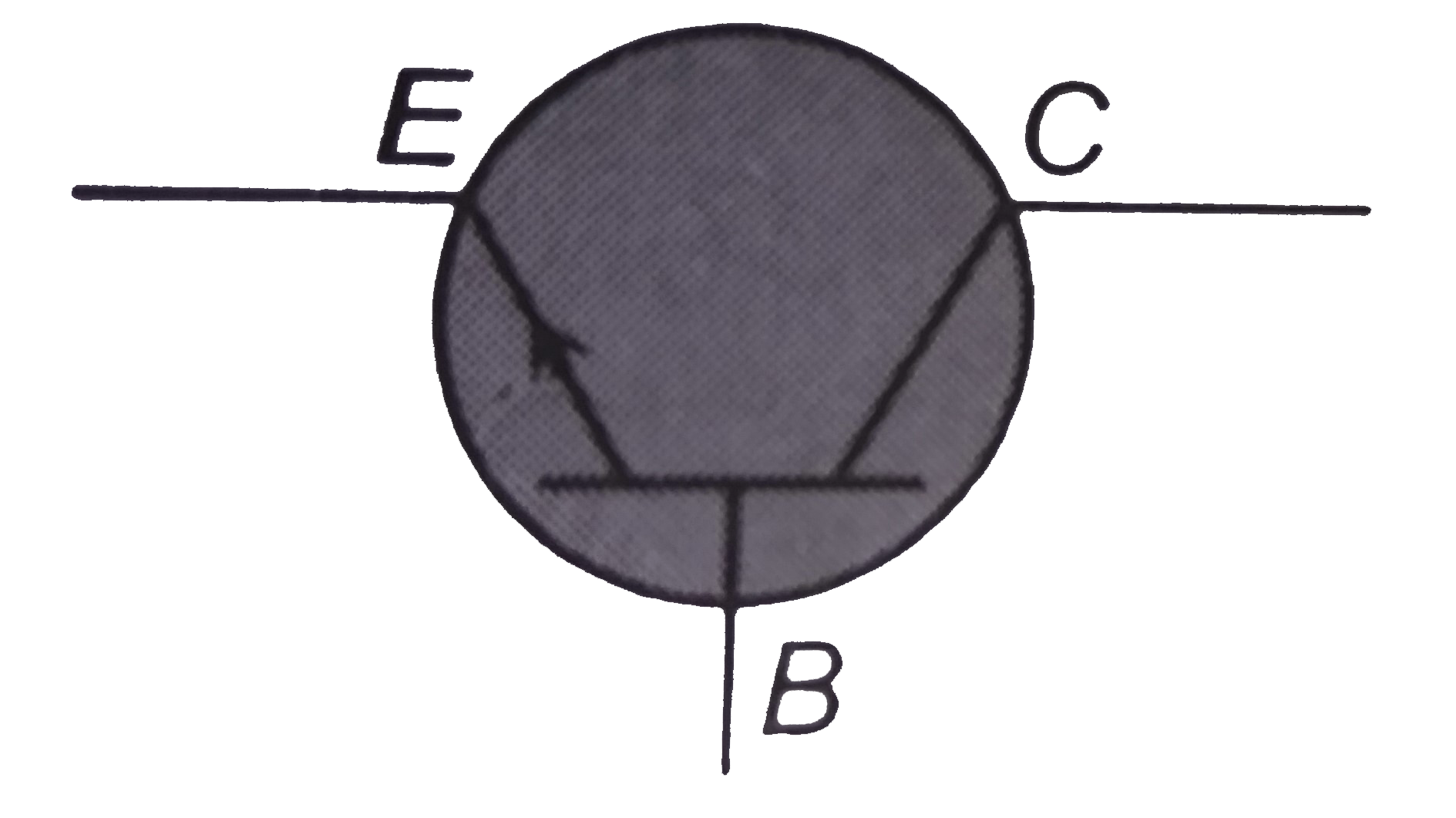
View SolutionAn `NPN`-transistor circuit is arranged as shown in figure. It is
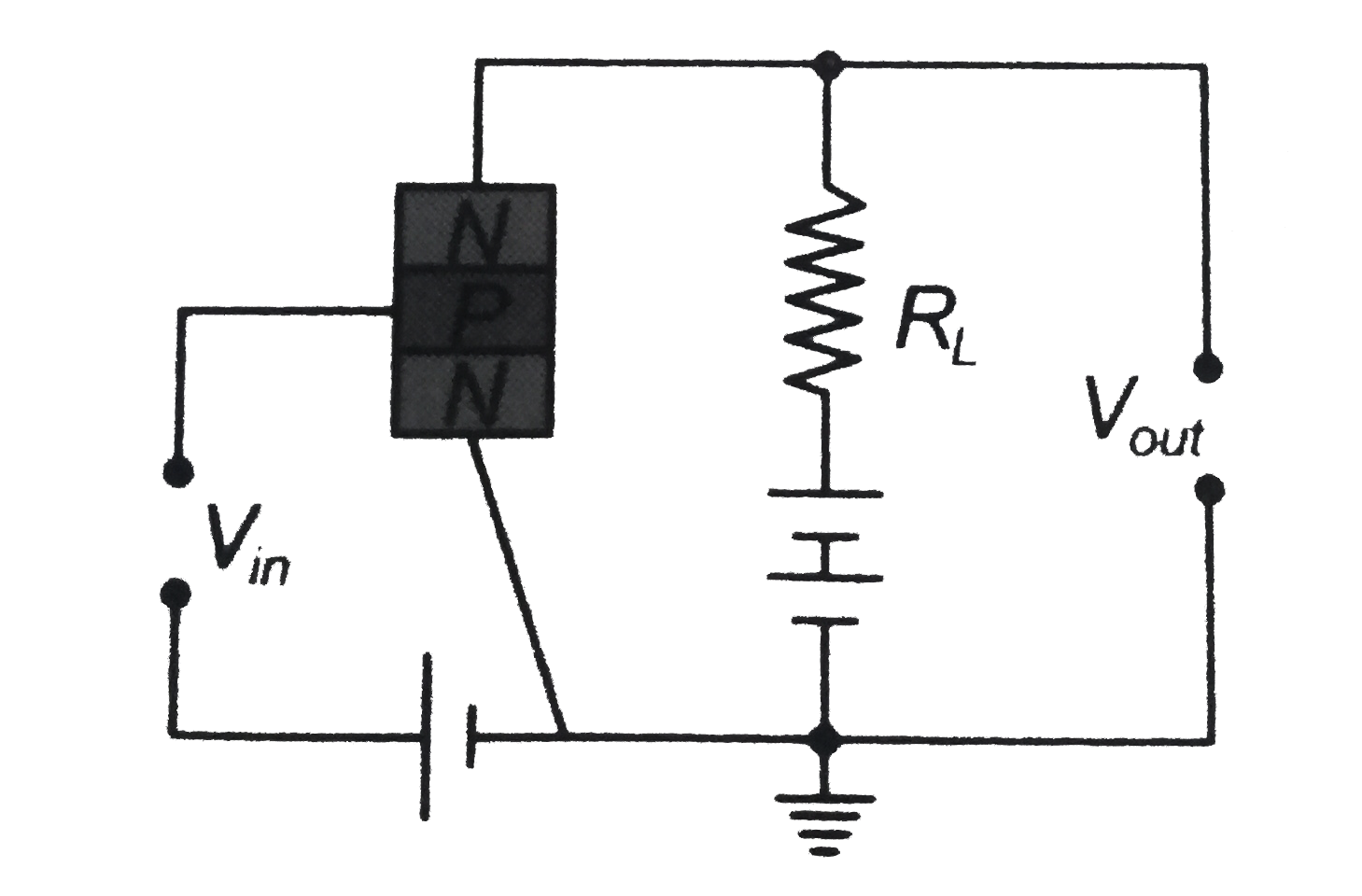
View SolutionThe part of a transistor which is heavily doped to produce a large number of majority carriers, is
View SolutionFor a transistor the current amplification factor is `0.8`. The transistor is connected in common emitter configuration. The change in the collector curren when the base current chages by a `6mA` is
View SolutionIn a common base amplifier circuit, calculate the change in base current if that in the emitter current is `2mA` and `alpha=0.98`
View SolutionIn case of `NPN`-transistor the collector current is always less than the emitter current because
View SolutionIn a transistor circuit shown here the base current is `35 muA`. The value of the resistor `R_(b)` is
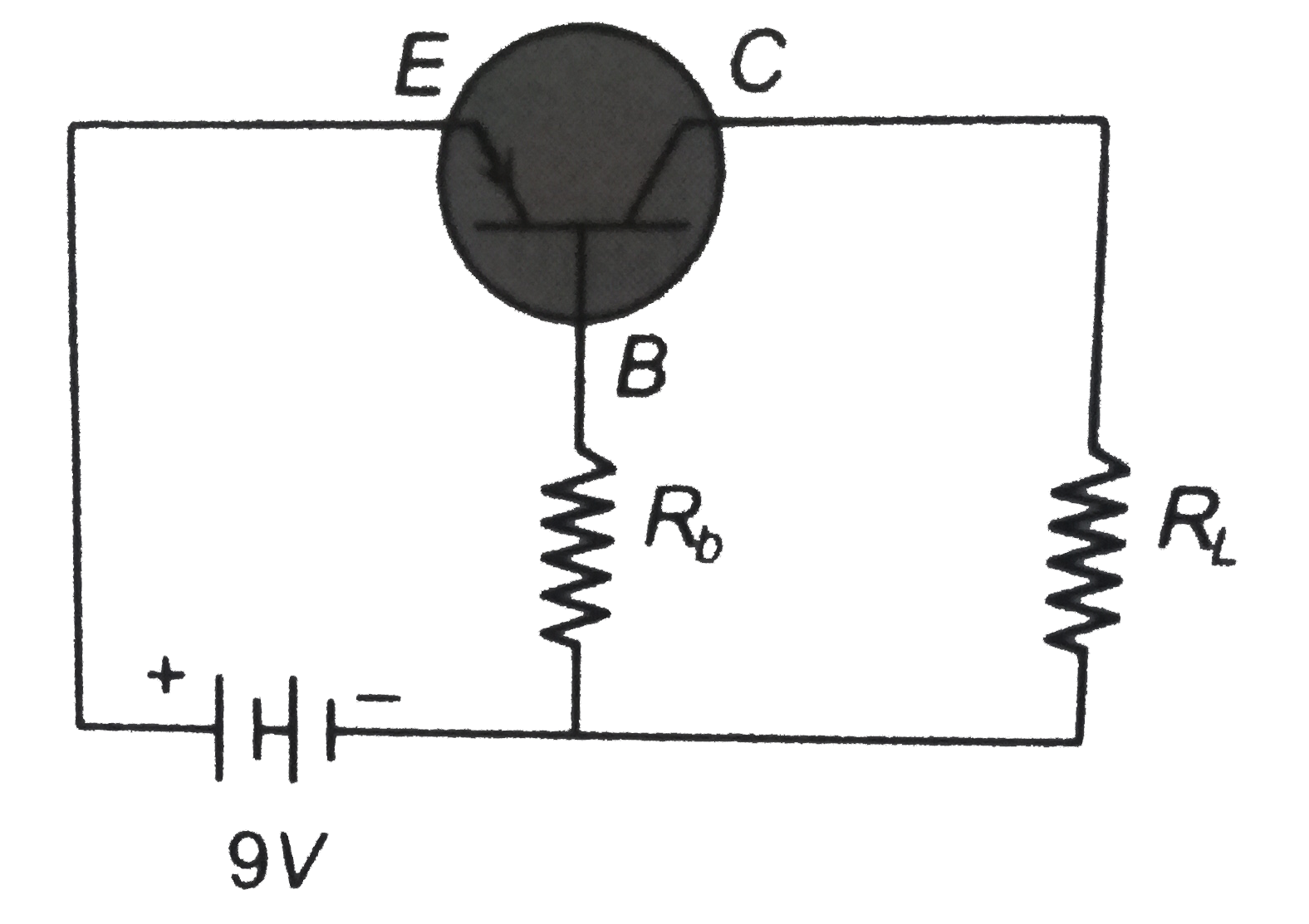
View SolutionIn transistor, a change of `8.0 mA` in the emitter current produces a change of `7.8 mA` in the collector current. What change in the base current is necessary to produce the same change in the collector current ?
View SolutionIn a transistor configuration `beta` -parameter is
View SolutionWhich of these is unipolar transistor?
View SolutionFor a transistor, in a common emitter arragement, the alternating current gain `beta` is given by
View SolutionThe relation between `alpha` and `beta` parameters of current gains for a transistors is given by
View SolutionWhen npn transistor is used as an amplifler
View SolutionIn the `CB` mode of a transistor, when the collector voltage is changed by `0.5` volt. The collector current changes by `0.05 mA`. The output resistance will be
View SolutionWhich of the following is used to produce radio waves of constant amplitude?
View SolutionWhile a collector to emitter voltage is constant in a transistor, the collector current changes by `8.2 mA` when the emitter current changes by `8.3 mA`. The value of forward current ratio `h_(fe)` is
View Solution`NPN` transistor are prefered to `PNP` transistor because they have
View SolutionIn a transistor in `CE` configuration, the ratio of power gain to voltage gain is
View SolutionIn the study of transistors as an amplifier, if `alpha=I_(c)//I_(c)` and `beta=I_(c)//I_(b)`, where `I_(c),I_(b)` and `I_(e)` are the collector, base and emitter currents, then
View SolutionFor a transistor amplifier in common emitter configuration for load impedance of `1 k Omega (h_(fe) = 50 and h_(oe) = 25)` the current gain is
View SolutionIn the following common emitter configuration an `NPN` transistor with current gain `beta=100` is used. The output voltage of the amlifier will be
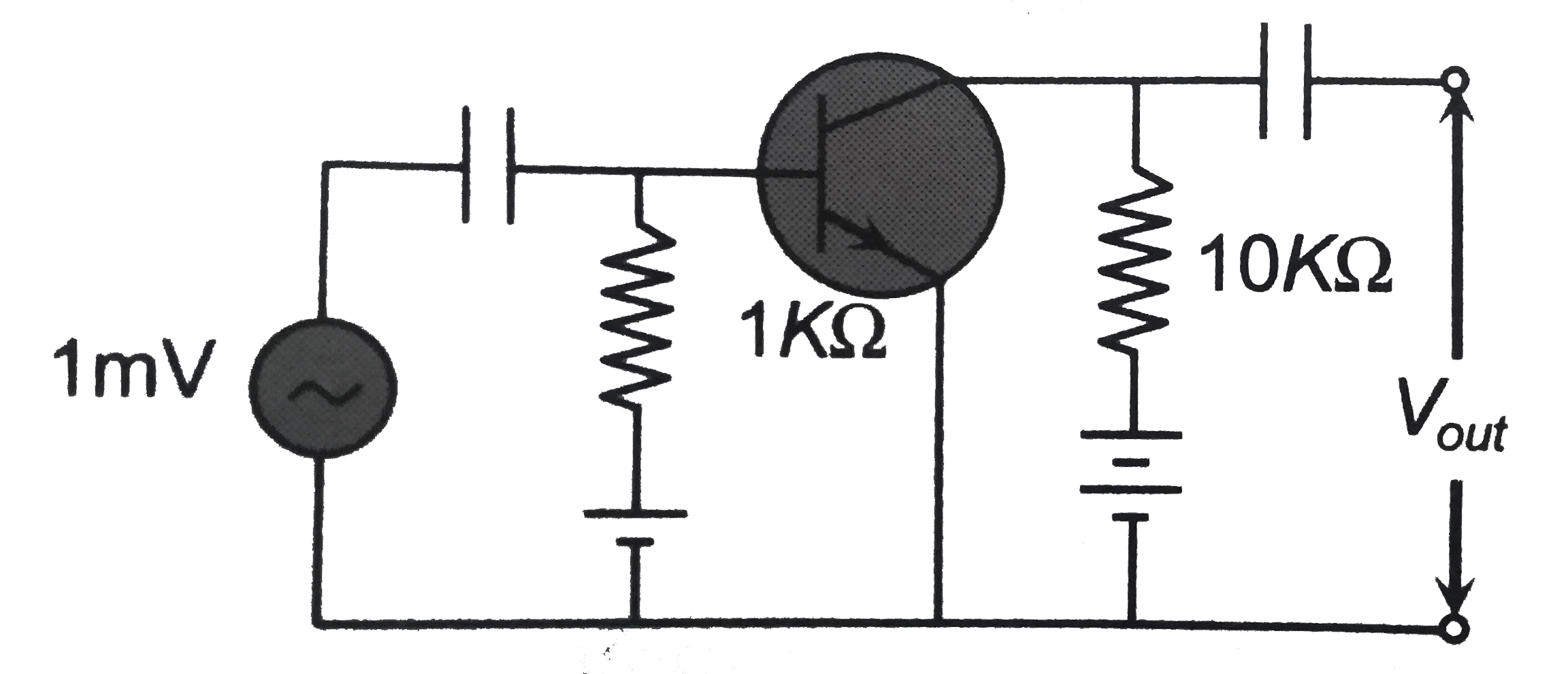
View SolutionIn semiconductor the concentrations of electron and holes are `8xx10^(18)//m^(3)` and `5xx10^(18)//m` respectively. If the mobilities of electrons and hole are `2.3 m^(2)//`volt-sec and `0.01m^(2)//` volt-sec respectively, then semicondutor is
View SolutionA transistor is used as an amplifier in `CB` mode with a load resistance of `5 k Omega` the current gain of amplifier is `0.98` and the input resistance is `70 Omega`, the voltage gain and power gain respectively are
View SolutionFor the transistor circuit shown below, if `beta=100`, voltage drop between emitter and base is `0.7V` then value of `V_(CE)` will be
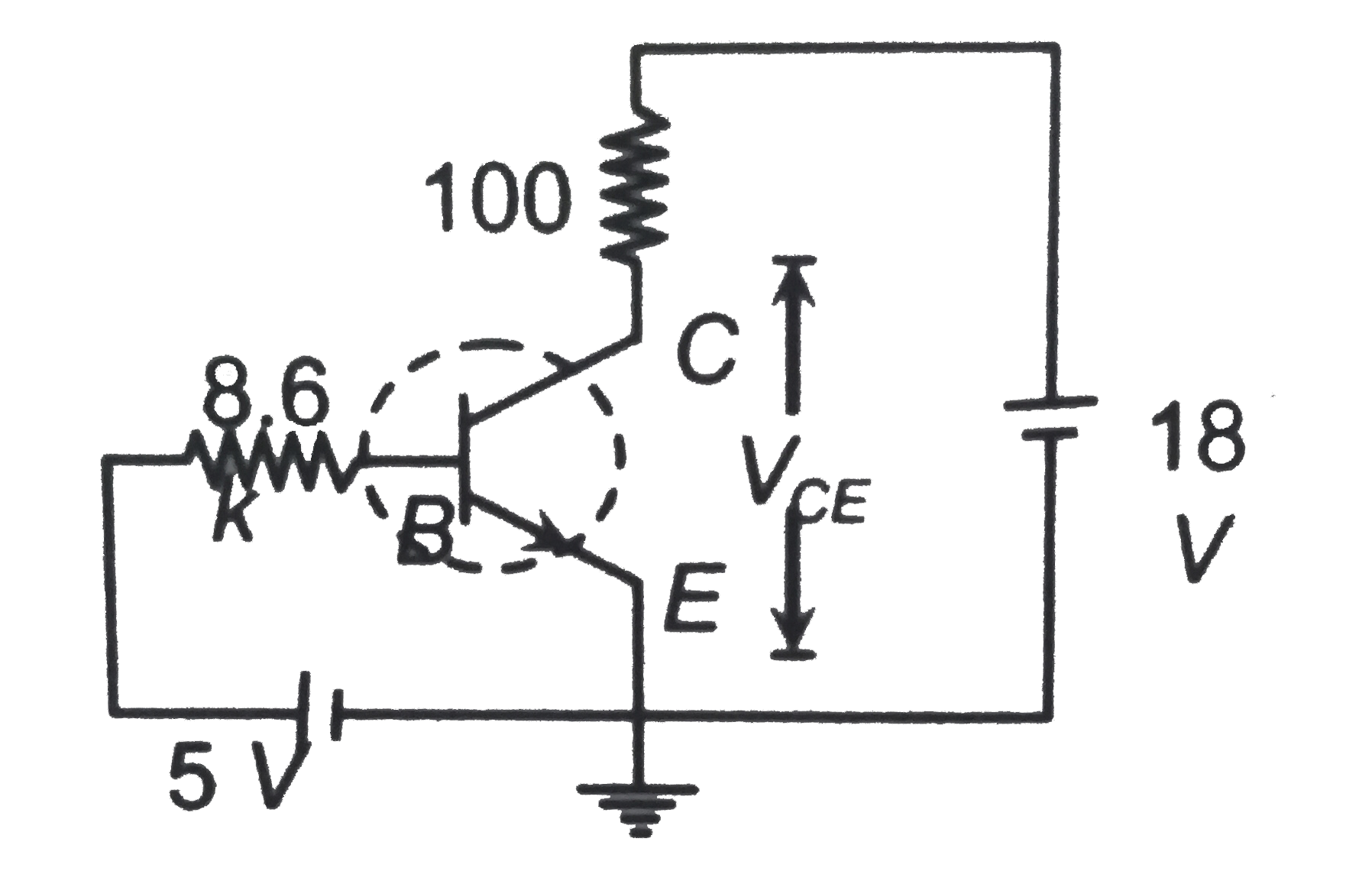
View SolutionIn `NPN` transistor, `10^(10)` electrons enters in emitter region in `10^(-6)`sc. If `2%` electrons are lost in base region then collector current and current amplification factor `(beta)` respectively are
View SolutionIn the following common emitter circuit if `beta=100, V_(CE)=7 V, V_(BE)`=Negligible, `R_(C)=2 kOmega` then `I_(B)=?`
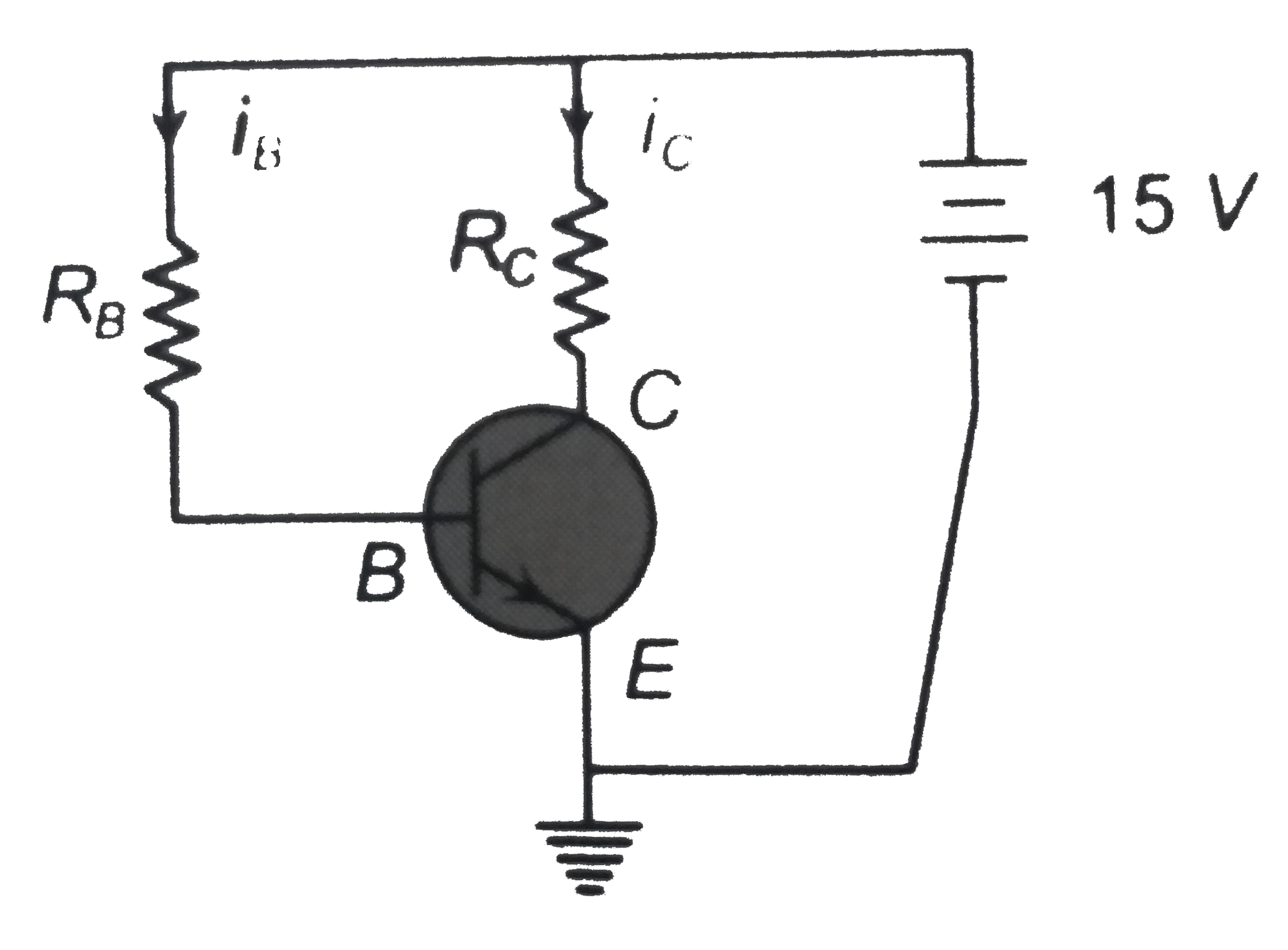
View SolutionIn the following circuit, a voltmeter `V` is connected across a lamp `L`. What change would occure in voltmeter reading if the resistance `R` is reduced in value?
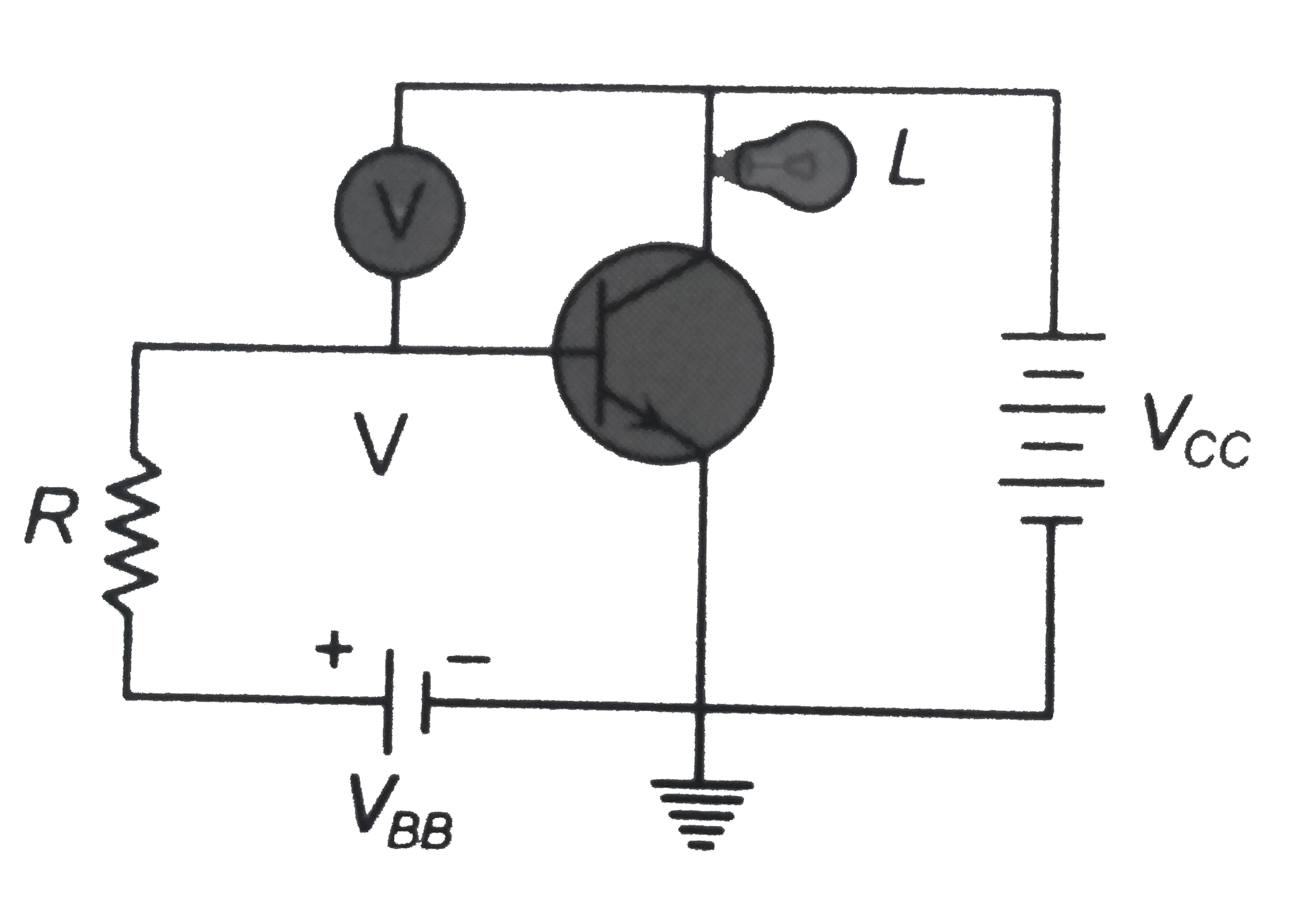
View Solution
Junction Transistor questions and complete solutions for chapter SEMICONDUCTOR ELECTRONICS of A2Z PHYSICS (HINGLISH) of Class 12